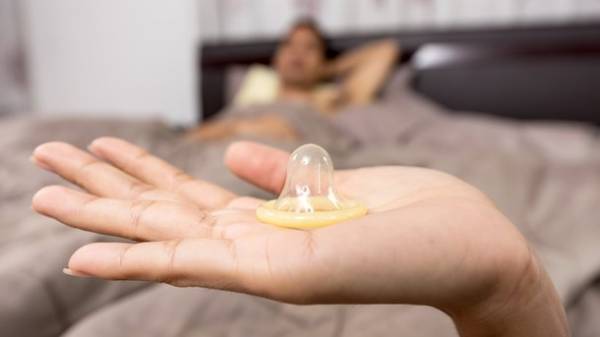
According to historians, like condoms were used in Ancient Egypt, but as they were unknown to science. The first condom, like the modern, were made in the early sixteenth century, the physician Charles Condom, not from latex but from the intestinal mucosa of the sheep. And for a long time, condoms were the only way to protect yourself from pregnancy and STDs. But we live in the XXI century, where a lot of reliable means of contraception. We learned from the experts what are the advantages and disadvantages of each tool and how to choose the right.
OUR EXPERTS:
- Sergei Baksheev, gynaecologist, doctor of higher category, candidate of med. B.
- Anatoly Andreev, venerologist, dermatologist, obstetrician-gynaecologist, doctor of higher category
CONDOM: BANANA OR RIBBED?
Available and most effective means of contraception. Protects not only against unwanted pregnancy but also from HIV and sexually transmitted diseases 99%, ideal for teenagers and those who frequently change partners. The disadvantages are allergic to latex (seen in women and in men) and personal unacceptability. Also condoms can diversify the sexual life: some treated for this fruity lubricant, others provided with ribs, bumps or spirals to enhance stimulation.
SEE ALSO
- New condom in the U.S.: the material consists of 90% water
Try to buy condoms at the pharmacy, always check the integrity of the packaging and do not use after the expiry date. There is the female condom, which you need to install the vagina. But doing this is inconvenient, and the degree of protection is not more than 80%.
HORMONES: PLAY BY THE RULES
Hormonal contraceptives for women are different (pills, patches, injection, capsule). They do not protect against STDs, but guarantee up to 98% protection from pregnancy if used correctly. To prescribe “hormones” have a doctor, otherwise serious problems until hormonal changes (weight gain, excess body hair growth). Minus contraceptives — the need to strictly follow the instructions: for example, the pills need to drink daily for 21 consecutive days. Using birth control patch (glued on the body before the act), it is necessary to wait 30-40 minutes to have the hormone absorbed into the bloodstream. More convenient hormonal injection (the injection lasts a month) and capsules (inserted under the skin for 3-5 months).
SPERMICIDES: CHEMICALS
Popular with women uses chemical contraception — the use of spermicides that are simply “kill” the sperm. Separate spermicides contain antibacterial ingredients and protect against some sexually transmitted diseases (but not all). They are available in different forms: creams, ointments, gels, vaginal suppositories, tablets. To use spermicides need locally, right before a sexual act. For example, the candle need to enter, wait 10-15 minutes, and then you can have sex. If sufficient time does not pass, the contraceptive effect will not.
Even with proper use of spermicides protect only 70-80%. Sometimes the drugs can disrupt the normal flora of the vagina, to cause discomfort and allergic reactions — and women and men.
INTERRUPTED INTERCOURSE: TO BE ON TIME
The easiest way to prevent conception is to prevent sperm in the vagina. This can be achieved by using interrupted sexual act — when ejaculation occurs after you extract the penis from the vagina. From sexually transmitted diseases and STDs such fraud is not protected, but the protection against pregnancy may be as high as 80% if the man knows how to control themselves.
But to use this method of contraception experts recommend in combination with others: first, the sperm can be released during sexual intercourse, and secondly, men are less sensitive start ejaculation in prostatitis, vesiculitis.
“NEED A DAY”: ON THE CALENDAR
Many women resort to “biological method”: calculate the onset of ovulation and determine the “safe spaces”. To make it relatively simple, but such calculations can hardly be called contraception, their efficiency does not exceed 50-60%. The rendering is suitable only healthy women with a stable cycle, and even their ovulation day may shift due to power or emotional States.
STERILIZATION: FOREVER
The most radical method of contraception and the only way to 100% protect from unwanted pregnancy (but powerless when STDs). Surgery is applicable for both women and men, and it is irreversible.
Male sterilization involves the intersection or dressing seed channel, making it impossible for fertilization. When female sterilization intersect or removed fallopian tube. After these actions the pregnancy is impossible in principle. At the legislative level the issues of sterilization are not regulated, but wants to become a childless must be of legal age, not having mental disorders and contra-indications (genital infections, inflammatory processes in the pelvis).
SPIRAL: LIFE IN A CIRCLE
Intrauterine powerless in the face of sexually transmitted diseases, but 89% protects against fertilization. It is a device that is installed into the uterine cavity and acts as a mechanical barrier to sperm. There are also spiral to a container with hormones: they simultaneously act as hormonal contraceptives. Plus spiral is that it can be set on three years. But it is suitable only for women who do not plan to have children in the near future: after removal of the reproductive function is restored within a year.
Contraindicated spiral defects of the uterus, diseases of the genital organs, cancer. It is not recommended to use this means of contraception in young nulliparous women: a foreign body in some cases, may cause irreversible consequences. Improper installation of the spiral can just grow into the cavity of the uterus, disrupt the menstrual cycle, less common ectopic pregnancy. Therefore, if the device is installed, an annual check by a gynecologist is required!







